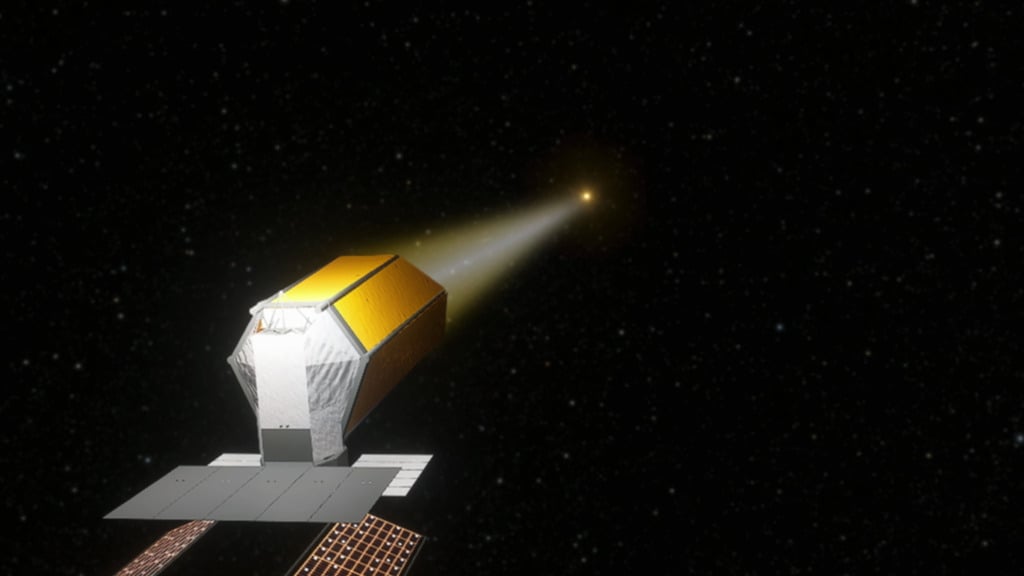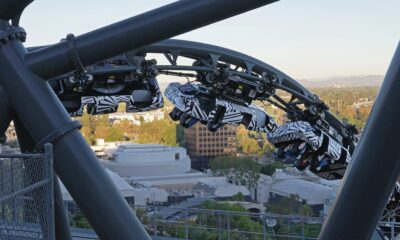Science
New Instrument Proposal for HWO Aims to Identify Earth-like Planets

The proposed addition of a second instrument to the Habitable Worlds Observatory (HWO) could significantly enhance the search for Earth-like exoplanets. Currently, HWO’s primary tool is a coronagraph, which, while powerful, may not be sufficient for detecting the biosignatures of at least 25 Earth-like planets in the atmospheres surrounding nearby stars. A new paper authored by Fabien Malbet of the University of Grenoble Alpes and his colleagues suggests that incorporating an astrometric instrument could enable the observatory to track planets with a precision of 0.5 micro-arcseconds (μas). This precision could dramatically expand the number of potential candidates for atmospheric analysis.
As it stands, only 12% of sun-like stars within 65 light-years are confirmed to host planets, and all of these are gas giants. The absence of rocky exoplanets in this vicinity does not imply their non-existence; rather, the signals from such planets may be obscured by background noise from existing missions like Gaia. While Gaia is currently the most advanced planetary surveyor, it operates with a precision of approximately 20-30 μas, which is insufficient for detecting smaller planets like Earth.
Enhancing Precision in Exoplanet Detection
The proposed astrometric instrument would offer a precision advantage of 400-600 times that of Gaia, enabling HWO to discover Earth-sized planets around hundreds of nearby stars. Achieving this remarkable precision hinges on two crucial components: a sophisticated calibrator and extensive imaging. Astrometric sensors have been utilized for decades to detect exoplanets by measuring the “wobble” of stars caused by orbiting planets. The greater the precision, the smaller the wobble that can be detected, thereby allowing astronomers to identify smaller planetary masses.
Despite their advantages, astrometric methods are susceptible to errors stemming from various factors, including imperfections in detectors or misalignments in mirrors. To overcome these challenges, the authors propose a technology called a Detector Calibration Unit (DCU). This unit would generate a pattern of light and dark bands across the CMOS sensor, facilitating the isolation and correction of small errors before they escalate. By ensuring the precise calibration of each pixel in the sensor’s field, researchers can enhance the stability of multiple images.
Dr. Malbet and his team suggest that HWO would need to gather over 100 individual measurements of a single target star during its operational lifespan of 3-4 years to reach the necessary precision for confirming a planet’s existence. This extensive data collection is vital to offset any random errors that the DCU does not correct, as combining numerous images minimizes the impact of residual inaccuracies.
Broader Implications for Astrophysics
The implications of this advanced technology extend beyond exoplanet detection. The new astrometer could provide insights into Cold Dark Matter (CDM) theories, particularly regarding the distribution of dark matter in galaxies. Current CDM theory posits that dark matter is concentrated in “cusps” at the centers of galaxies. However, observational data indicates a more “core-like” structure. HWO’s astrometer may detect subtle gravitational effects from dark matter “spikes,” contributing to our understanding of the forces shaping these structures.
While this concept is not entirely new—Dr. Malbet was instrumental in the earlier Theia mission proposal, which aimed to utilize similar principles—the integration of this technology into HWO represents a logical progression. Given that HWO is fundamentally dedicated to identifying habitable worlds, any enhancement that aids this mission is valuable.
Development of the HWO is not expected to commence in earnest until the 2030s, with a potential launch in the 2040s. This timeline allows ample opportunity for the integration of the proposed astrometric instrument. The project manager’s willingness to embrace these ambitions will ultimately determine whether this innovative advancement will be realized within the observatory’s framework.
The potential for HWO to revolutionize our understanding of exoplanets and dark matter alike illustrates the importance of continual innovation in astrophysics. As the quest for habitable worlds continues, tools that enhance our observational capabilities will be crucial for future discoveries.
-

 World2 weeks ago
World2 weeks agoGlobal Air Forces Ranked by Annual Defense Budgets in 2025
-

 World2 weeks ago
World2 weeks agoMass Production of F-35 Fighter Jet Drives Down Costs
-

 Top Stories2 weeks ago
Top Stories2 weeks agoNew ‘Star Trek: Voyager’ Game Demo Released, Players Test Limits
-

 Top Stories2 weeks ago
Top Stories2 weeks agoDirecTV to Launch AI-Driven Ads with User Likenesses in 2026
-

 Science2 weeks ago
Science2 weeks agoTime Crystals Revolutionize Quantum Computing Potential
-

 World2 weeks ago
World2 weeks agoElectrification Challenges Demand Advanced Multiphysics Modeling
-

 Lifestyle2 weeks ago
Lifestyle2 weeks agoLia Thomas Honored with ‘Voice of Inspiration’ Award at Dodgers Event
-

 Entertainment2 weeks ago
Entertainment2 weeks agoFreeport Art Gallery Transforms Waste into Creative Masterpieces
-

 Lifestyle2 weeks ago
Lifestyle2 weeks agoDiscover Reese Witherspoon’s Chic Dining Room Style for Under $25
-

 Health2 weeks ago
Health2 weeks agoGavin Newsom Critiques Trump’s Health and National Guard Plans
-

 Entertainment2 weeks ago
Entertainment2 weeks agoFast & Furious Coaster Hits the Track at Universal Studios
-

 Health2 weeks ago
Health2 weeks agoResearchers Uncover New Insights into Cancer Mortality Causes









